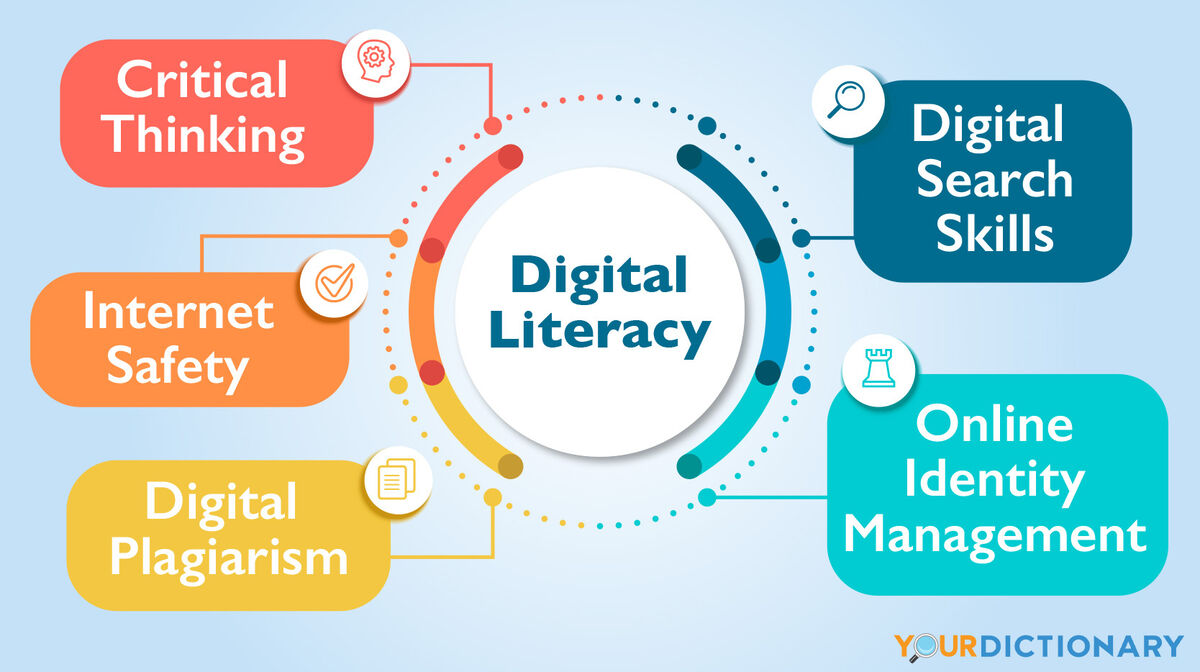Mastering Digital Literacy: A Guide to Teaching Essential Skills
In today's digital age, proficiency in digital literacy is crucial for navigating the complexities of the modern world. From online communication and information literacy to cybersecurity and digital citizenship, teaching digital literacy skills equips students with the tools they need to thrive academically, professionally, and personally. This article explores practical strategies, key concepts, and effective teaching methods to foster digital literacy among learners of all ages.
Understanding Digital Literacy
Digital literacy encompasses the ability to find, evaluate, create, and communicate information effectively using digital technologies. It involves a combination of technical skills, critical thinking, and ethical considerations in navigating digital spaces. Key components include:
-
Information Literacy: Evaluating the credibility and reliability of online sources.
-
Media Literacy: Analyzing and interpreting media messages, including images, videos, and news articles.
-
Digital Citizenship: Understanding rights, responsibilities, and ethical behavior in digital environments.
-
Technical Skills: Proficiency in using digital tools, software applications, and online platforms.
Importance of Teaching Digital Literacy
Incorporating digital literacy into education prepares students to:
-
Navigate Information Overload: Effectively sift through vast amounts of information to find relevant and reliable sources.
-
Communicate Effectively: Utilize digital communication tools for collaboration, networking, and information sharing.
-
Problem-Solve: Apply critical thinking and problem-solving skills to address digital challenges, such as cybersecurity threats and online misinformation.
-
Empower Lifelong Learning: Equip students with skills that support continuous learning, adaptation to technological advancements, and digital innovation.
Strategies for Teaching Digital Literacy Skills
1. Start Early and Scaffold Learning
-
Age-Appropriate Content: Introduce digital literacy concepts gradually, adapting lessons to students' developmental stages and prior knowledge.
-
Build Foundations: Begin with basic computer skills, internet safety, and responsible online behavior before progressing to more complex topics.
2. Hands-On Learning and Practical Applications
-
Interactive Activities: Engage students in interactive activities, simulations, and real-world scenarios to apply digital literacy skills.
-
Project-Based Learning: Design projects that require research, digital creation (e.g., videos, presentations), and collaboration using online tools.
3. Critical Thinking and Evaluation Skills
-
Source Evaluation: Teach strategies for assessing the credibility, bias, and relevance of online information.
-
Media Analysis: Analyze digital media content for authenticity, manipulation, and ethical implications.
4. Digital Citizenship and Ethical Use
-
Ethical Guidelines: Discuss ethical considerations in digital interactions, copyright laws, digital rights, and responsible use of digital resources.
-
Online Safety: Educate students about internet safety, privacy protection, and strategies for avoiding online risks (e.g., phishing, cyberbullying).
5. Collaborative Learning and Peer Support
-
Peer Learning: Foster collaborative projects, peer reviews, and discussions to enhance digital literacy skills through shared knowledge and experiences.
-
Mentorship: Pair students with digital mentors or older peers who demonstrate strong digital literacy skills.
Tools and Resources for Teaching Digital Literacy
-
Educational Websites: Use reputable educational websites that offer interactive tutorials, quizzes, and resources on digital literacy topics.
-
Digital Tools: Incorporate digital tools such as Google Suite, Microsoft Office, educational apps, and online platforms for collaborative learning and content creation.
-
Online Courses: Access online courses or webinars for educators to stay updated on digital literacy trends, best practices, and emerging technologies.
Evaluating and Assessing Digital Literacy Skills
-
Formative Assessment: Use quizzes, discussions, and hands-on activities to assess students' understanding and application of digital literacy concepts.
-
Performance Tasks: Assign projects that require students to demonstrate digital research, media creation, and problem-solving skills.
-
Feedback: Provide constructive feedback on digital projects, emphasizing strengths and areas for improvement in digital literacy competencies.
Overcoming Challenges in Teaching Digital Literacy
1. Digital Divide
-
Access Issues: Address disparities in access to technology and internet connectivity by providing alternative resources or utilizing school-provided devices.
-
Equity Concerns: Advocate for equitable access to digital resources and support for students from underserved communities.
2. Technological Change
-
Adaptation: Stay updated on technological advancements and integrate new digital tools and platforms that enhance learning experiences.
-
Professional Development: Attend workshops, conferences, or online courses to build expertise in teaching digital literacy.
Conclusion
Teaching digital literacy skills is fundamental to preparing students for success in the digital age, equipping them with critical thinking, communication, and problem-solving abilities essential for academic, professional, and personal growth. By integrating digital literacy into curricula, educators empower students to navigate digital landscapes responsibly, ethically, and confidently. Embrace innovative teaching methods, collaborate with peers and communities, and leverage digital resources to cultivate a generation of digitally fluent learners who thrive in an interconnected world. Together, we can foster a culture of lifelong learning and digital empowerment, ensuring every student has the skills and resilience to navigate and excel in a rapidly evolving digital society.



add comment
please login to add or edit your comment
login nowpost comments
no comments added yet!